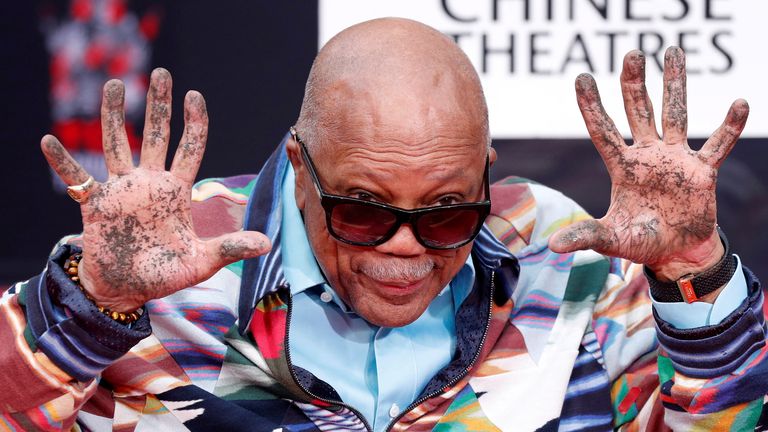Quincy Jones was an open book, but you may not have known these things about him
3 min read
Quincy Jones, a towering figure in the music world, was beloved by fans across generations for his groundbreaking work as a composer, musician, and producer. His career spanned multiple decades and included iconic collaborations across radio, film, and television. Jones passed away at the age of 91 in Bel Air, California, in 2024. Though he was never shy about sharing his incredible life story—through countless interviews and his daughter Rashida Jones’ 2018 Netflix documentary Quincy—there are some lesser-known details about his life that many might find surprising.
The Iconic Collaboration with Frank Sinatra
Quincy Jones’ relationship with legendary singer Frank Sinatra is one of the most celebrated of his career. The two first crossed paths in 1958 when Jones was hired to arrange music for Sinatra’s band. Their collaboration was a defining moment for both men. Jones not only conducted for Sinatra, but he also reshaped some of the crooner’s most famous songs, including the beloved classic Fly Me to the Moon. Originally written as a waltz, Jones rearranged it into a swinging, upbeat jazz version that would become synonymous with Sinatra’s smooth vocal style.
This particular rendition went on to make history in 1969 when astronaut Buzz Aldrin played it on the moon, making Fly Me to the Moon the first song ever to be heard in outer space. Reflecting on the achievement years later, Jones remarked to The New York Times, “I freaked. It was the first music played on the moon.”
A Close Call with the Manson Family Murders
In 1969, when the infamous Charles Manson family carried out their brutal murders at actress Sharon Tate’s home in Los Angeles, Quincy Jones narrowly escaped becoming one of the victims. At the time, Jones had become friends with renowned hairdresser Jay Sebring, who was part of Tate’s inner circle. Sebring had invited Jones to visit Tate’s home to help with his hair loss issues. However, Jones forgot about the appointment and didn’t go.
The following day, his friend Bill Cosby called to inform him of Sebring’s tragic death, along with Tate and others in the house, at the hands of Manson’s followers. Jones was stunned. “I had been with Jay the night before,” he said. “It was impossible to believe that he was gone.” This narrow escape added to the many twists of fate that defined Jones’ life.
Surviving a Life-Threatening Aneurysm
In 1974, at the age of 41, Quincy Jones faced a life-threatening health scare. He collapsed one day from a severe headache, and doctors diagnosed him with a brain aneurysm. The situation became even more alarming when a second aneurysm was discovered during surgery. Jones later described the experience as “scary,” but his resilience would shine through in the years to come. He survived not one, but two surgeries, with doctors telling him that his chances of surviving were extremely slim—about one in a hundred.
Incredibly, Jones made a full recovery, but his doctors advised him against ever playing the trumpet again due to the risk of triggering another aneurysm. Despite the warnings, Jones attempted to play during a tour in Japan, only to stop after feeling a sharp pain in his head as the surgical clip on his blood vessel shifted. That was the last time he ever picked up the trumpet, although his musical influence would continue to reverberate around the world.
A Legacy That Endures
Quincy Jones lived a life filled with remarkable experiences and close encounters. From his collaborations with music legends like Sinatra to narrowly avoiding one of Hollywood’s most infamous crimes, Jones’ life was anything but ordinary. His near-death experiences, both physical and emotional, only seemed to deepen his appreciation for life and for the music that had always been at the core of his being.
Beyond his personal struggles and triumphs, Jones left an indelible mark on the music industry. He produced some of the most influential records of the 20th century, including Michael Jackson’s Thriller, the best-selling album of all time. His work helped define the sound of jazz, pop, and R&B, and his contributions to music and culture remain unparalleled.
Quincy Jones’ death marks the end of an era in music, but his extraordinary legacy continues to inspire artists and fans alike. His openness about his life’s challenges and triumphs has provided a roadmap for resilience and creativity that will resonate for generations to come.







